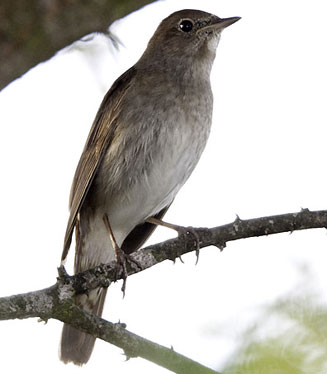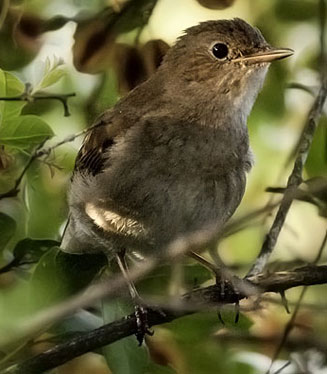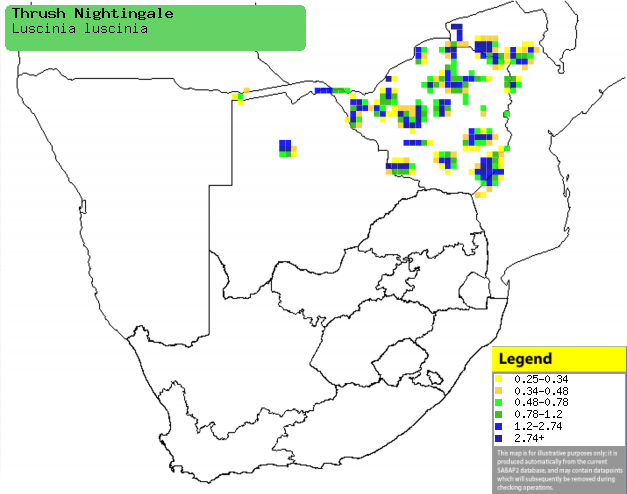|
Luscinia luscinia (Thrush nightingale)
Lysternagtegaal [Afrikaans]; Noordse nachtegaal [Dutch]; Rossignol progné
[French]; Sprosser [German]; Rouxinol-russo [Portuguese]
Life
> Eukaryotes >
Opisthokonta
> Metazoa (animals) >
Bilateria >
Deuterostomia > Chordata >
Craniata > Vertebrata (vertebrates) > Gnathostomata (jawed
vertebrates) > Teleostomi (teleost fish) > Osteichthyes (bony fish) > Class:
Sarcopterygii (lobe-finned
fish) > Stegocephalia (terrestrial
vertebrates) > Tetrapoda
(four-legged vertebrates) > Reptiliomorpha > Amniota >
Reptilia (reptiles) >
Romeriida > Diapsida > Archosauromorpha > Archosauria >
Dinosauria
(dinosaurs) > Saurischia > Theropoda (bipedal predatory dinosaurs) >
Coelurosauria > Maniraptora > Aves
(birds) > Order: Passeriformes
> Family: Muscicapidae
 |
 |
|
Thrush nightingale, Lower Sabie, Kruger National
Park, South Africa. [photo Johann Grobbelaar
©] |
Distribution and habitat
Its breeding grounds stretch from northern and eastern
Europe to western Siberia; in the non-breeding season it heads south through the
Sahara Desert to Ethiopia through Kenya and Tanzania to Zambia and southern
Africa. Here it is locally common but quiet and unobtrusive, mainly occurring in
Zimbabwe but extending to Mozambique, the Caprivi Strip (Namibia) and
north-central Botswana, with isolated records in north-eastern South Africa. It
generally prefers dense, tangled thickets in riparian woodland, especially with
Acacia, Brandybush grewia (Grewia flava), and Caper-bush (Capparis
tomentosa); it may also occupy suburban gardens.
|
 |
|
Distribution of Thrush nightingale in southern Africa,
based on statistical smoothing of the records from first SA Bird Atlas
Project (©
Animal Demography unit, University of
Cape Town; smoothing by Birgit Erni and Francesca Little). Colours range
from dark blue (most common) through to yellow (least common).
See here for the latest distribution
from the SABAP2. |
Movements and migrations
It departs from its breeding grounds in early
August, eventually getting to southern Africa around late
December-January, making it one of the latest arriving migrants
recorded in the region. It mainly departs in late March, eventually
arriving at its breeding grounds in the period from late April to
mid May.
Food
It does most of its foraging in the leaf litter, flicking
through leaves and plant debris in search of arthropods and occasionally eating
small, soft berries.
Threats
Not threatened.
References
-
Hockey PAR, Dean WRJ and Ryan PG 2005. Roberts
- Birds of southern Africa, VIIth ed. The Trustees of the John Voelcker
Bird Book Fund, Cape Town.
|
